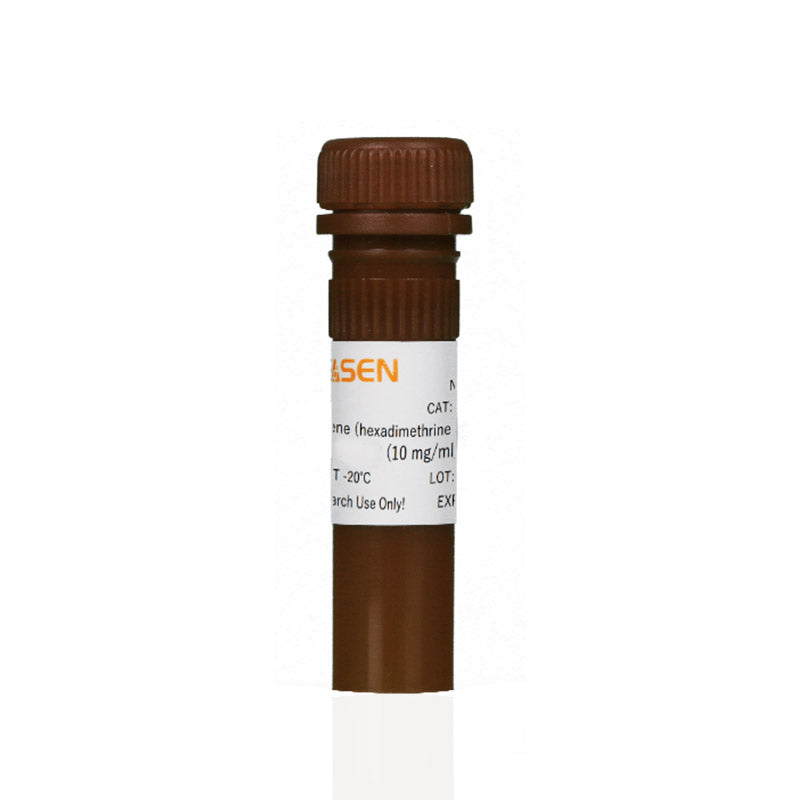Description
Specification
The product is provided in solution form, and the powder is reconstituted in 0.9% NaCl to make a 10 mg/mL solution, which is then sterilized using a 0.22 μm filter. It is typically diluted at a ratio of 1:1000-1:2000 for use, with specific dilution ratios depending on the cell type, as outlined in relevant literature.
Shipping and Storage
Transportation and storage are recommended at -20 ºC, with a shelf life of 2 years. It is advised to aliquot and store to avoid repeated freeze-thaw cycles.
Precautions:
-
Wear laboratory attire and disposable gloves for safety and health.
-
This product is for research purposes only.
Operational steps
(for reference, specific concentrations may vary, refer to relevant literature):
Note: Polybrene may exhibit significant toxicity to certain cells (such as terminally differentiated neurons, DC cells), and a toxicity test is recommended for initial use.
Experiment 1: Retroviral Infection
-
Preparation of recombinant retrovirus stock: Culture cells containing a monolayer of transfection retrovirus packaging cells in a 100 mm dish with 5 mL growth medium (5% serum). After 24 hours, remove the culture medium and filter it through a 0.45 μm filter.
-
Culturing cells for infection: In a 100 mm dish, add 10 mL complete growth medium with a cell density of 5×105 per dish.
-
Virus infection: After 24 hours of cell culture, remove the complete culture medium. Infect cells with 2 mL virus supernatant containing Polybrene (final concentration: 5-10 μg/mL) at 37°C for 3-6 hours.
-
Collect virus particles: Add 8 mL complete growth medium. After 2-3 days of culture, collect the culture medium to obtain virus particles.
Experiment 2: Transfection
-
Culture cells in complete growth medium with a cell density of approximately 50%.
-
After 18-24 hours of cell culture, prepare a DNA-growth medium-Polybrene mixture. Add complete growth medium (2 mL for a 60 mm dish, 3 mL for a 100 mm dish) and preheat to 37°C. Gently mix 10 ng~10 µg plasmid. Add Polybrene to a final concentration of 5-10 μg/mL. Gently mix. Each component should be added in the specified order.
-
Remove the culture medium and add the DNA-growth medium-Polybrene solution to the cells at 37°C for 6-20 hours. Gently mix every 1.5 hours within the first 6 hours of cell culture.
-
Remove the DNA-growth medium-Polybrene solution. Cover cells with DMSO shock solution (15% DMSO in 1× HBSS). Gently shake the culture dish for 10 seconds each time the solution is added to ensure even distribution. Incubate cells at 37°C for 4 minutes.
-
Immediately remove the DMSO shock solution and gently wash the cells twice with complete growth medium. For a 60 mm dish, wash with 5 mL of culture medium each time, and for a 100 mm dish, wash with 10 mL of culture medium each time.
-
Add complete growth medium to the cells.
-
Protein expression: After 24-72 hours of culture, collect cells for protein expression analysis as needed.
Cell selection: After 24-72 hours of culture, based on the cell status, switch to fresh selection medium and continue with cell selection.

